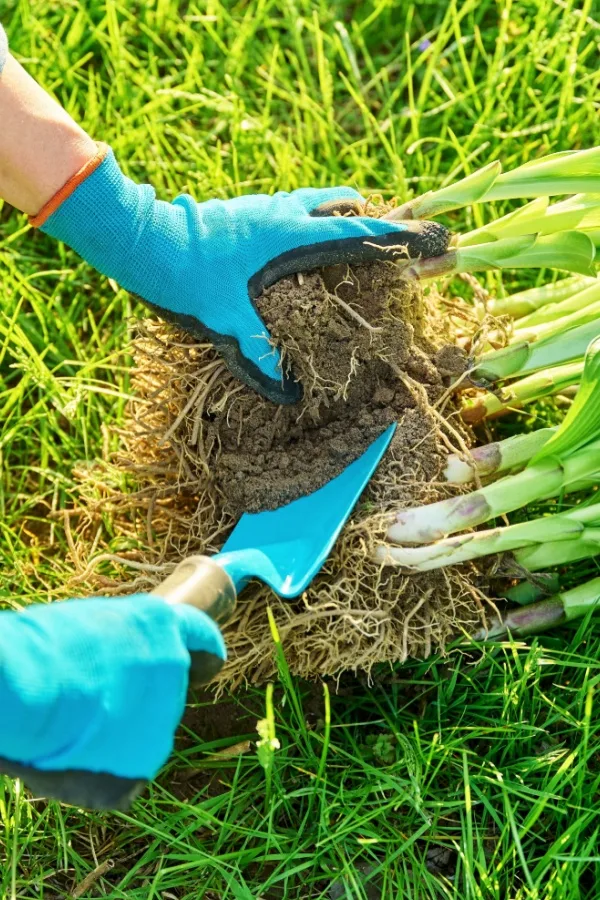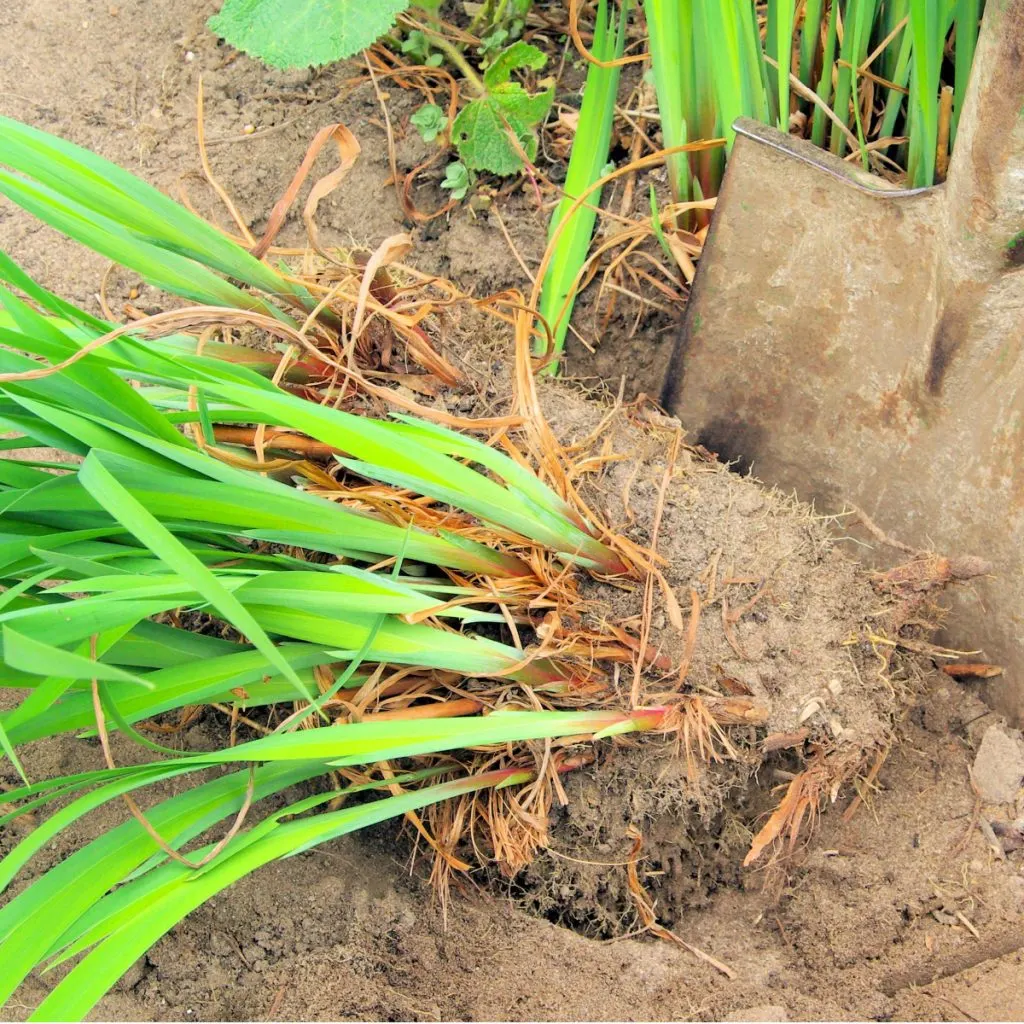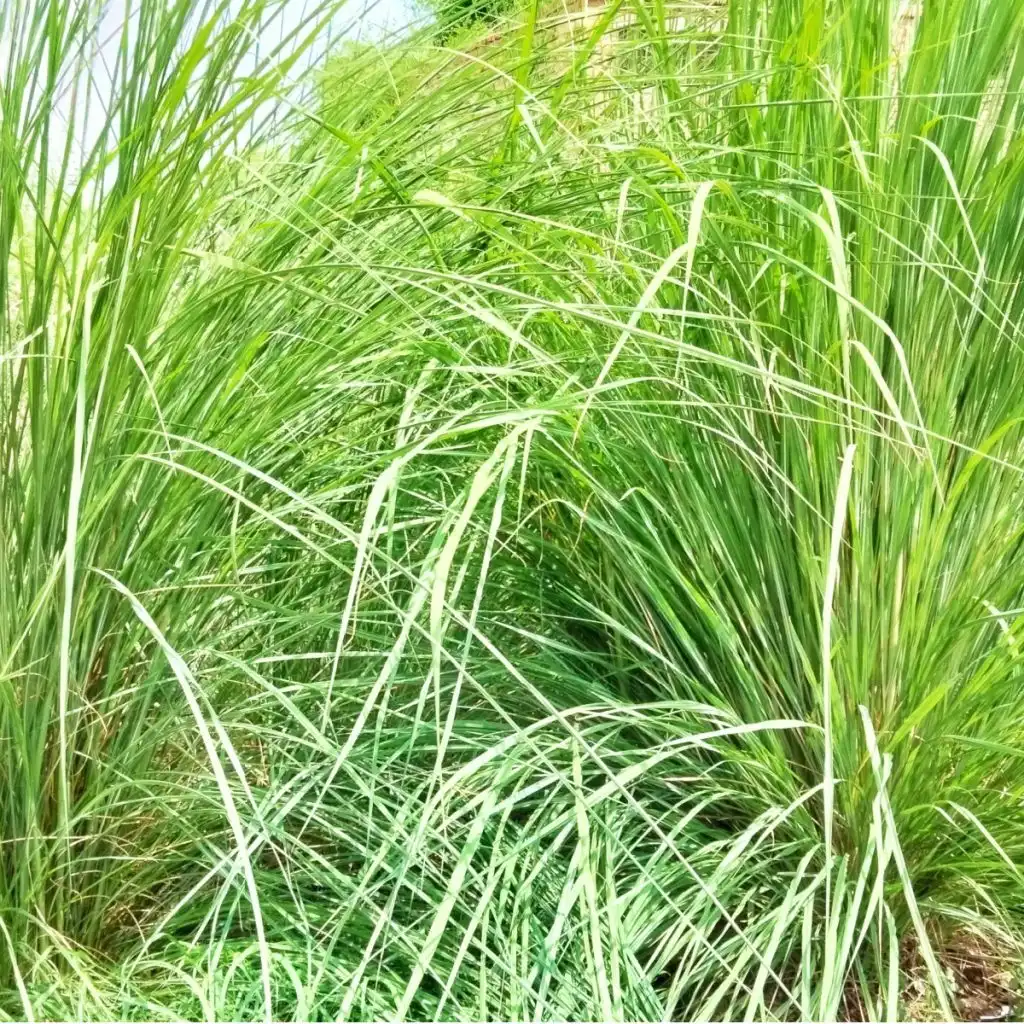One of the best ways to keep your flowerbeds healthy and strong is to divide your existing perennials every few years – especially when you can do it in the spring and have your flowerbeds full of lush flowers all summer long!
Dividing your perennials every few years not only keeps your garden looking neat and fresh, but also gives you free plants to fill out your landscape. But most of all, it helps your plants live longer, bloom better, and stay healthier.
Letting your plants grow too crowded together can cause serious issues. It leads to poor air circulation, weak blooms, and even disease. As plants grow too big over time, their roots become crowded. And with that, they bloom less – and can even begin to die out in the center.

As it turns out, spring is one of the best times to divide many perennials. The weather is cooler, and the plants are just starting to come alive. This makes it easy to dig up and split them. Even better, it allows them time to recover and settle into their new spots before the summer heat arrives.
5 Perennials You Can Divide In The Spring
Here is a look at five of the most popular perennials to divide in the spring – and how to do it with ease.
1. Dividing Hostas Early In The Season
Hostas are big, leafy plants that grow well in shady areas – and they also happen to be very popular in home landscapes. But as hostas grow bigger over the years, the center of the plant can become woody and begin to die out.
The best plan for dividing hostas is to do so every three to five years. This will keep them full and lush, all while helping you get more plants to fill in your shade garden.
Hostas can be divided in early spring as soon as the ground is soft enough to dig. Use a shovel to gently dig around the whole plant and lift the clump out of the ground. Shake a bit of the dirt so you can see the roots and growing tips more clearly before splitting.

Use a sharp knife or spade to cut the clump into smaller pieces. Make sure each piece has at least a few inches of roots to re-establish. Replant the pieces right away, giving them enough space apart from one another to grow without crowding. Water in the new transplants and they are ready for the season!
2. How To Divide Perennial Daylilies In The Spring
Daylilies are hardy perennials that bloom in late spring and summer. Each bloom only lasts a day, but there are usually many blooms over several weeks. Daylilies spread out over time and can become too crowded, which will lead to fewer flowers with each passing year.
In early spring, before the daylily leaves get too tall, dig up the entire clump. You can actually dig them up before they even sprout, as long as the ground is workable.
Shake off enough soil so you can see the roots clearly. Gently pull the clump apart with your hands. If the roots are tough and hard to separate, you can use a garden knife to make new divisions. Garden knives can be a huge help when splitting and dividing most perennials. Affiliate Link: Hori-Hori Garden Knife

Each new piece should have at least a few inches of roots. If the leaves have sprouted, trim them back to a few inches so the plant can focus on growing new roots. Replant the divisions at the same depth they were growing before and water them well.
Once daylilies blooms, with a little care – you can get most to actually rebloom a second time in the same growing season. See our article: What To Do With Daylilies After They Bloom – How To Get Daylilies To Rebloom! For even more daylily growing tips, be sure to check out: 3 Simple Secrets To Get Your Daylilies To Bloom Bigger & Better This Year!
3. Blanketflower
Blanketflower is a big blooming perennial that flowers with red, orange, or yellow daisy-like flowers. It blooms for a long time in summer and is great for sunny spots. It’s a short-lived perennial if left along, but dividing it every year or two can help it have new life and even more blooms.
In early spring, when new growth just begins to appear, dig up the entire clump. Use your hands or a knife to gently break it into smaller pieces. Each piece should have some roots and a bit of green growth. Remove any old or dead stems and roots from the center of the plant.
Replant the healthy pieces right away in a sunny spot with well-drained soil. Water them well and keep the soil moist until the new plants are settled in. Discard any old or weak stems, as these will likely not produce plants.
Listen To Our Podcast Below On Dividing Perennials In The Spring
4. Ornamental Grasses
Ornamental grasses add a lot of texture and movement to the flowerbeds and landscapes – but they can become quite overgrown if left to grow in the same spot for too many years. Most grasses grow in clumps, while others spread out a bit more with their roots. But they all benefit from dividing.
Grasses that grow in clumps such as switchgrass, fountain grass, and feather reed grass will slowly begin to die out in the center. By simply dividing these ornamental grasses every three to five years – you can keep the plants from beginning to weaken in the center.
It’s best to divide ornamental grasses before new growth starts to appear in early spring. This makes the job easier since you won’t have to deal with tall, dried blades. It also allows the plant to be divided without worry of killing it in the middle of summer.
First, cut back last year’s growth to just a few inches tall so you can see the base of the plant. Then dig up the whole clump. Grasses often have thick, tough roots, so this might take some effort. Use a sharp spade, garden knife, or even a saw to cut the clump into smaller pieces.

Try to keep each section a good size with plenty of healthy roots. If the center of the clump is dead or not growing, you can throw that part away. Replant the healthy pieces and water them well.
5. Coral Bells
Coral bells are well known green, purple, red, silver, and more. They also send up tiny flowers on tall stems in late spring or early summer. The plants grow in small mounds and often begin to grow woody in the center over time.
Dividing helps to keep this from occurring – all while keeping the plant neat and healthy. The good news? It also gives you even more Coral bells for free!
In early spring, when new growth begins, gently dig up the plant. Use a sharp knife or garden spade to cut the crown into smaller sections. Each section should have some roots and at least a few leaves or new buds. Take out any old or dead parts from the center.
Replant the healthy pieces right away, leaving space between them for good air flow. Water them well and add mulch around the plants to help keep the soil moist. For more tips on adding beauty to your landscape with perennials, be sure to check out How To Create Stunning Containers & Potted Plants From Perennials – For Free!
Here’s to dividing your perennials this spring – and to keeping your flowerbeds growing strong by giving your plants room to breathe and thrive!
Simple Garden Life
Follow Our Facebook Page For Even More Great Tips! Simple Garden Life Facebook Page
Simple Garden Life is a website dedicated to keeping gardening fun, simple and enjoyable! We publish two new articles each week along with a new garden podcast episode every two weeks. This article may contain affiliate links.
